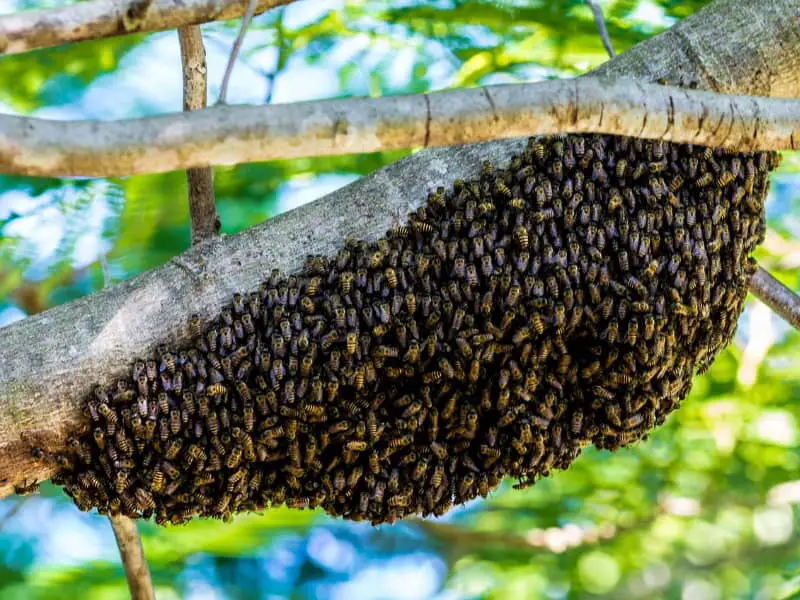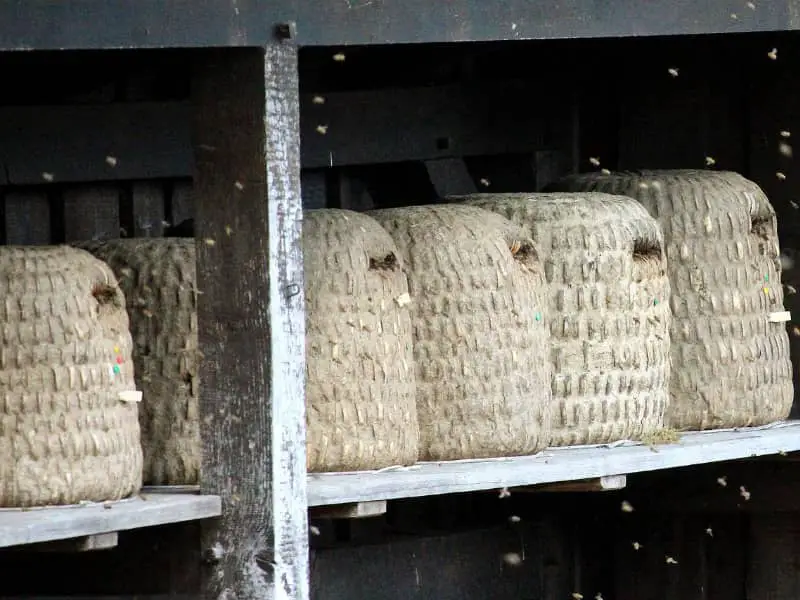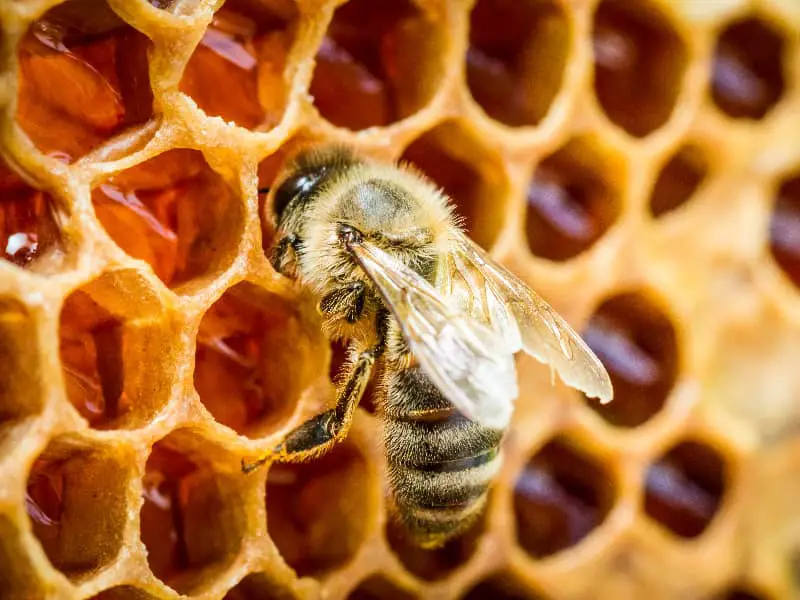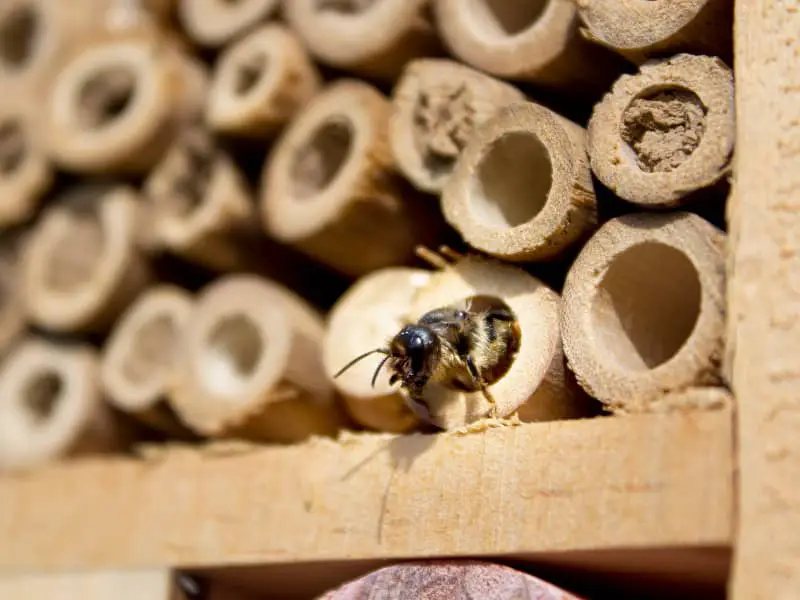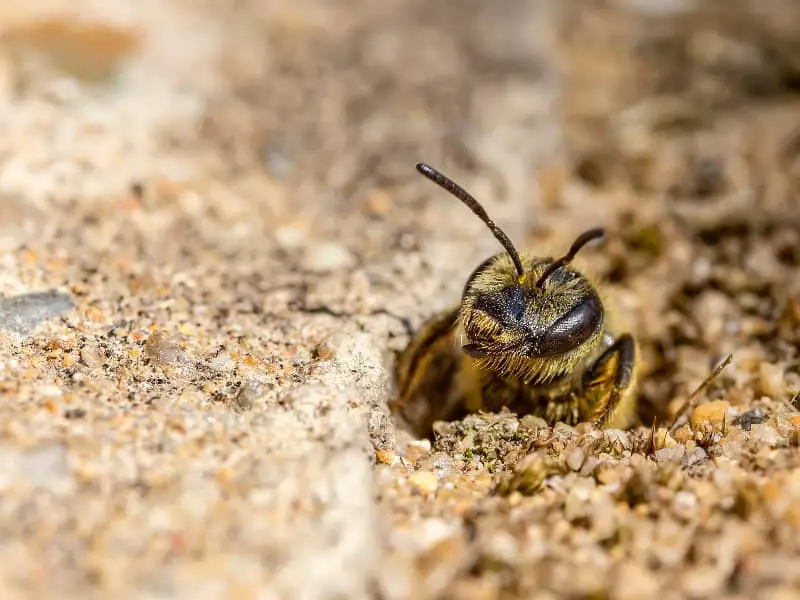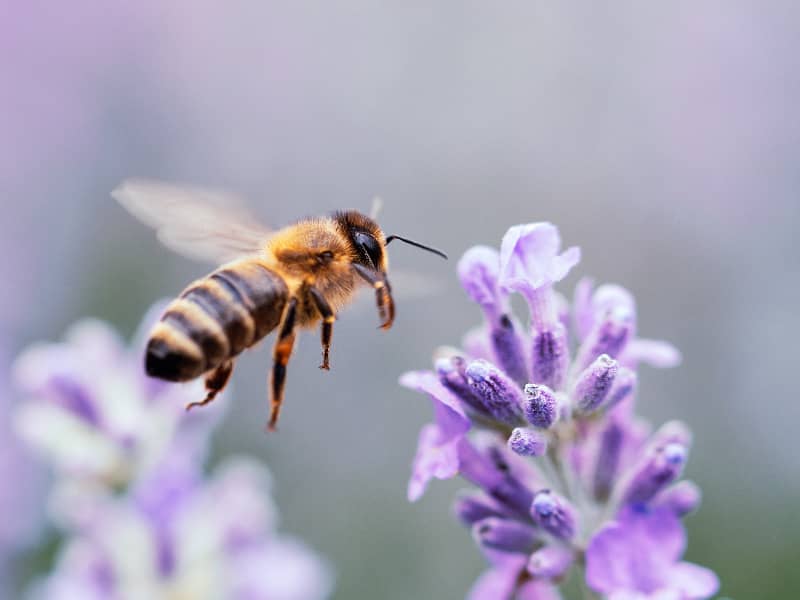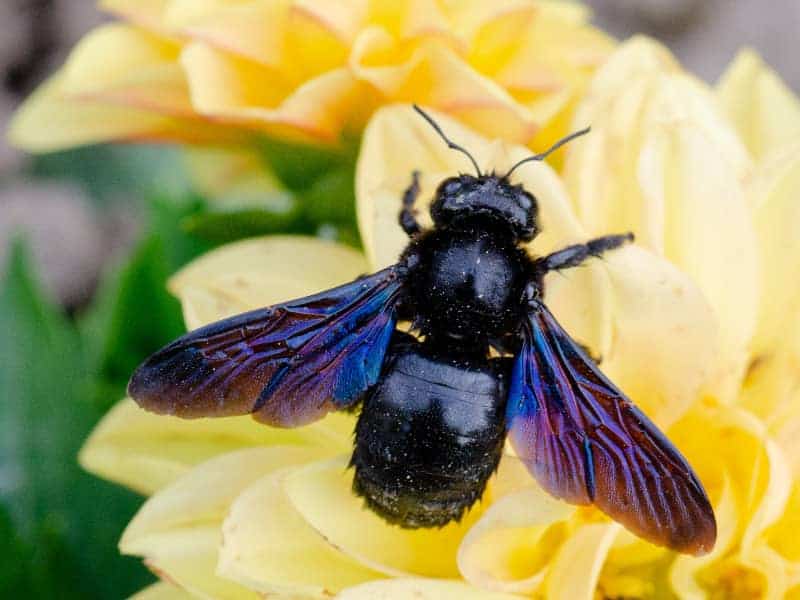
Black wood bee
The black wood bee, scientifically known as Xylocopa violacea, is remarkable in many ways. Its appearance in nature is unmistakable. In contrast to many other bee species, which are kept in inconspicuous brown or yellow tones, it immediately catches the eye with its deep black coloration.
Their iridescent wings can shimmer in different shades depending on the incidence of light, which adds to their fascination. The European continent can boast of being home to these amazing insects. During their flight phases, they are hard to miss, not only because of their size, but also because of the low, buzzing sounds they produce.
Anyone who has been lucky enough to see them up close will not soon forget the sight.
An appearance that deceives
Even if the black wood bee looks impressive with its size and color, you shouldn't be fooled. They are not nearly as scary as they may seem. In truth, these bees are very peaceful. Their sting, although rarely used, is far less painful than that of a honey bee.
The shiny metallic, jet-black appearance may be off-putting to some, but it is mainly a means of deterring predators. This method of camouflage and deception is widespread in the animal world and allows the wood bee to live in relative safety.
The home of the black wood bee
The home of the black wood bee is truly a work of art. With its powerful jaws, it can create impressive tunnels and chambers in dead or rotten wood. It has a preference for softer wood, especially from deciduous trees. This is where it lays its eggs and provides them with a mixture of pollen and nectar.
These nests are not only functional, but also amazingly complex. Some researchers believe that the creation of these nests requires a high level of cognitive ability, which in turn underlines the intelligence of these insects.
The diet of the black wood bee
While the preferences for nesting are quite specific, the black wood bee is much more flexible in its diet. They visit a variety of flowers, from large flowers to small wildflowers. The long Trunk of the bee enables it to penetrate deep into calyxes that are inaccessible to other insects.
This gives it access to nectar sources that remain unused by competitors. At the same time, it collects pollen, which it forms into pollen balls that serve as food for its larvae.
The way of life and special features
The black wood bee exhibits a variety of behaviors that distinguish it from other bee species. Firstly, they are solitary bees, which means that each female takes care of herself. There is no queen, no swarm and no workers. Instead, each female has her own nest, which she drills and maintains herself.
Males often have their own territories, which they defend vigorously against rivals. This can lead to exciting aerial duels that are fascinating to watch. Even if they do not live in collectives, they still have complex social interactions that are of great interest to observers.
Black wood bee - Brood care and reproduction
The reproductive behavior of the black wood bee is a fascinating spectacle that underlines the caring nature of these insects. After the female has drilled a suitable tunnel in a piece of rotten wood, she begins to lay her eggs. But that's just the beginning.
Each egg is supplied with a mixture of nectar and pollen, which serves as food for the emerging larva. This food supply, called "bee bread", is carefully placed near the egg. It is this high level of maternal care that ensures the next generation of wood bees are well nourished and ready to start their own life in the wild.
Natural enemies and dangers
Like any other animal in nature, the black wood bee is exposed to a number of threats. Natural enemies such as certain bird species, spiders and parasitic wasps can pose a threat to them. These parasitic wasps are particularly cunning. They lay their own eggs in the nests of wood bees.
When the wasp larvae hatch, they feed on the supplies or even on the larvae of the wood bee. But natural enemies are not the only threat. Habitat loss, mostly caused by human activities, as well as the use of pesticides, can affect the survivability of this impressive bee.

Protective measures and conservation the black wood bee
The importance of the black wood bee for our ecosystems cannot be overestimated. As pollinators, they play a crucial role in maintaining plant diversity. Fortunately, there are measures that can be taken to protect them. One of these is the creation of bee-friendly habitats.
This can be as simple as planting bee-friendly plants in gardens or putting up 'bee hotels'. On a larger scale, it means protecting wild areas and reducing the use of chemicals in agriculture. Education and awareness-raising are also key components.
The more people know about the black wood bee and its role in nature, the more likely it is that steps will be taken to ensure its survival.
A symbol of the beauty of nature
The black wood bee serves as a reminder of the wonders that exist in the natural world around us. Its stunning appearance, fascinating behaviors and crucial role in the ecosystem make it a perfect ambassador for biodiversity conservation. It reminds us that nature is full of surprises and beauty and that it is our responsibility to preserve these treasures for future generations.
Active even on cooler days
Heat plays an important role in the life cycle of the black wood bee. It needs warmth to fly. On cool days, they can often be seen warming up on sunny surfaces such as tree trunks. It is fascinating to know that their black coloration is not only a conspicuous feature, but also a functional advantage.
The dark color helps it absorb sunlight and warm up faster, so it can take off earlier than some of its lighter-colored relatives.
An interplay with plants
The relationship between the black wood bee and the plant world is one of interdependence. While the Bee nectar and pollen As a food source, it also pollinates the plants. Over the course of evolution, some flowers have even developed in such a way that they are particularly attractive to these large bees.
This means that they produce larger quantities of nectar or have special color patterns that attract the attention of bees.
Behavior towards people
Sometimes humans and bees can come into conflict, especially when it comes to habitat. But it is important to emphasize that although the black wood bee looks large and impressive, it is not a threat to humans. It is rare for them to sting, and if they do, it is only when they feel extremely threatened. In contrast, they are often very curious and may approach to investigate, especially if someone is wearing colorful clothing that they might mistake for a flower!
Myths and folklore
In many cultures, bees, including the black wood bee, are revered in myths and stories. They are often symbolic of industriousness, community and rebirth. In some traditions, bees were believed to be messengers between this world and the afterlife. The black wood bee, with its impressive appearance, has certainly helped to promote such stories and superstitions.
Conclusion on the black wood bee
The black wood bee is far more than just another insect in our ecosystem. With its impressive size, unique appearance and fascinating behavior, it is emblematic of the diversity and complexity of nature. It plays a crucial role as a pollinator and thus contributes to the preservation of plant species and ecosystems.
Their interactions with humans, from mere observation to scientific research, reflect our deep connection and dependence on nature. At a time when the loss of species and habitats is an increasingly worrying reality, the black wood bee reminds us of the importance of appreciating and protecting the beauty and value of nature.
Author

-
Garden animal - A life with nature
Welcome to my animal blog! My name is Dirk and I am happy to take you on my journey through the fascinating world of animals and gardening.
Born 54 years ago, I have had an insatiable curiosity for the animal world around me since childhood. Although I have moved professionally in other industries, my true passion has always been animals and nature. It is remarkable how a small garden has become such an important part of my life.
Many of my fondest memories are associated with the animals that share our home. Whether it's the curious squirrels that scurry across the trees in the morning, the colorful variety of birds that visit our feeders, or the busy bees and butterflies that pollinate our flowers, every moment with them is invaluable to me.
This blog is my contribution to share my experiences, discoveries and insights with like-minded people. Here I will share stories of unforgettable encounters with animals, give tips on gardening and creating wildlife-friendly habitats, and take you on my journeys through nature.
Thank you so much for being here!
Cordial,
Dirk aka garden animal
Last posts
- 27. February 2024PetsVeganes Hundefutter – Grün und Gesund?
- 18. January 2024ChickensOregano für Hühner
- November 27, 2023HamsterDiurnal hamsters
- November 24, 2023HamsterHamster hammock

